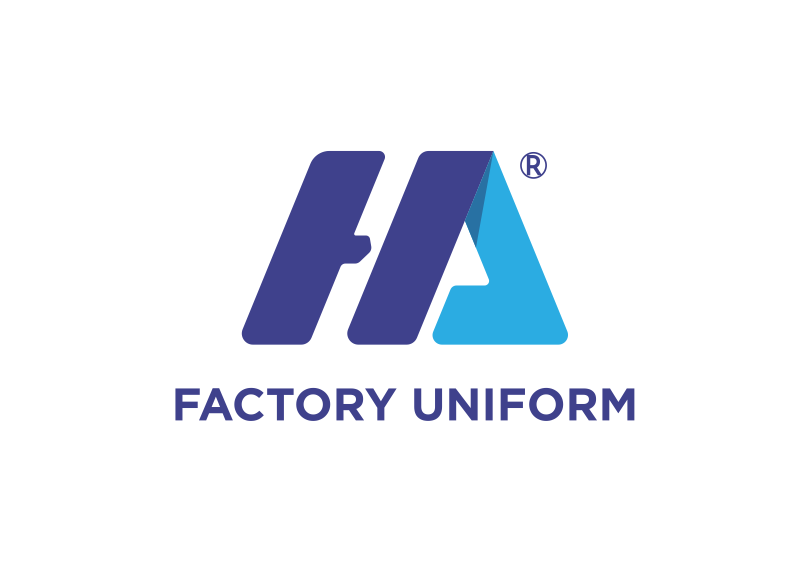No products in the cart.
Garment Export Company – Everything You Need to Know
Have you ever wondered why the Vietnamese garment industry is famous all over the world? Behind the shirts, t-shirts or workwear appearing on international shelves are the efforts of thousands of garment export companies. This is not just a simple industry, but also a major economic driver, bringing jobs and reputation to Vietnam. In this article, I will take you through every aspect of an export garment company – from definition, production process, to market and benefits. Let’s explore!

What is an Export Garment Company?
If you’re curious about garment export companies, this is the place to start. These businesses are not simply garment factories, but bridges bringing Vietnamese fashion to the world. But what exactly are they, and why are they important? Let’s find out!
How is an Export Garment Company Defined?
An export garment company is a business that specializes in producing clothes and garment accessories for sale in the international market. Unlike small garment factories serving domestic demand, these companies are often large-scale, employing hundreds or even thousands of workers to meet orders from countries such as the US, EU or Japan.
What makes them special? It is the ability to meet international standards, from fabric quality, seams, to production processes. For example, to export to the EU, products must comply with strict regulations on chemical safety (REACH) or sustainable labor (ILO). Therefore, this is not just about sewing, but also the art of combining techniques, management and business strategy. You can learn more about this standard on the ILO website.
What Role Does the Garment Export Industry Play in Vietnam’s Economy?
After understanding the definition, do you wonder how the garment export industry contributes to the country? I will reveal it right away! According to data from the Vietnam Textile and Apparel Association (VITAS), the garment industry contributes about 16% of Vietnam’s total export turnover, second only to electronics. In 2022, the export value reached more than 42 billion USD – a huge number!
Not just stopping at money, garment export companies also create millions of jobs, especially for female workers in rural areas. They build factories, improve infrastructure, and help Vietnam put itself on the global fashion map. Simply put, this is the “golden goose” of the economy. If you want to know more detailed data, check out the VITAS report.
Are Export Garment Companies Different From Domestic Garment Companies?
Now that you have seen their huge role, how are export garment companies different from garment companies serving the domestic market? The answer is yes, and the difference is clear!
- Scale: Export companies often have large factories, mass production to meet international orders, while domestic companies focus on smaller quantities.
- Quality: Export requires strict standards (such as ISO 9001), while domestic companies sometimes only need to meet basic needs.
- Market: One side is the US, EU, Japan; the other side is Vietnamese consumers.
For example, an export company like Hai Anh Garment can produce millions of products per year for foreign partners, while a local garment factory only makes a few hundred for a nearby store. This difference is not only in scale, but also in vision and strategy. What do you think about this difference?
What is the Production Process of an Export Garment Company?
Next, I will take you “behind the scenes” of an export garment company. Have you ever wondered how a shirt is made and exported? The process is not simple, but extremely interesting. Let’s explore!
What Does the Export Clothing Production Process Include?
For a product from a Vietnamese factory to appear on the shelves of New York or Tokyo, the garment production process must go through many strict steps. Here are the main stages:
- Design: Everything starts with a drawing, often provided by an international customer or developed by an in-house design team based on trends.
- Sewing: Fabrics are imported or domestically produced, and must meet standards for durability and color.
- Sewing: Using an automatic cutting machine to create fabric pieces, then sewing by hand or machine.
- Quality control: Each product is thoroughly inspected to ensure there are no errors.
- Packaging: Goods are packaged according to customer requirements, ready to be shipped for export.
Every step is closely monitored. For example, an order for Zara or H&M requires fast delivery time, without errors. This shows the professionalism and pressure that garment export companies face. Would you like to know more about how they work?
Do Export Garment Companies Use Modern Technology?
With such a complex process, do you think they use technology? The answer is yes, and a lot!
Today, garment export companies no longer rely entirely on manual labor. They use:
- CNC cutting machines: Cut fabric precisely, reduce waste.
- Automatic sewing machines: Double production speed compared to hand sewing.
- Management software: Track orders, optimize processes.
For example, companies like TNG have invested millions of dollars in technology to compete with China or Bangladesh. Technology not only saves time, but also ensures consistent quality – something that international customers highly value. If you are interested in garment technology, check out TNG’s website for more information.
What Are The Quality Control Steps In Export Garment Production?
With the support of technology, how can we ensure that the product meets standards? That is thanks to quality control – the most important step in the process. Here are the common steps:
- Check the fabric: Make sure the fabric is not torn or faded.
- Check the seams: No excess thread, no technical errors.
- Check the finished product: Measure the size, test the durability, check the label.
“A small error in quality control can cause the entire batch to be returned, causing billions of dong in damage.” – A manager at a large garment company shared.
Therefore, export garment companies often have their own inspection team, working meticulously on every detail. This not only maintains their reputation with customers, but also helps them maintain their position in the international market. Do you find this step important?
What Are The Outstanding Features Of The Garment Export Market?
Now that we understand how production works, it’s time to look at the export garment market – where these companies compete fiercely. Do you know where Vietnam stands on the global fashion map? Let’s find out!
How Is Vietnam’s Garment Export Market Ranked?
Vietnam is currently in the top 3 largest garment exporting countries in the world, after China and Bangladesh. According to data from the Ministry of Industry and Trade, in 2022, export turnover reached more than 42 billion USD, accounting for nearly 10% of the global market share.
What makes this success? That is:
- Cheap labor: Labor costs are lower than in China.
- Trade agreements: EVFTA, CPTPP open up tax exemption opportunities with the EU and major countries.
- Improved quality: Products increasingly meet high standards.
This achievement is not only a source of pride, but also a driving force for garment exporting companies to continue to develop. You can read more about EVFTA on the Ministry of Industry and Trade website.
Which Countries Are The Main Partners Of Vietnamese Garment Export Companies?
With that in mind, who are our buyers? Here is a list of the biggest markets:
- US: Accounts for more than 40% of total exports, thanks to high demand from brands like Nike, Gap.
- EU: Ranks second with orders from H&M, Zara, demanding green standards.
- Japan: Demands high quality, focuses on uniforms and high-end fashion.
- South Korea: A fast-growing market thanks to K-pop culture and fashion.
Each market has its own requirements, from low-cost (US) to sustainable (EU). This forces garment exporting companies to be flexible and adapt quickly. Which market do you think has the most potential?
Do Export Garment Companies Change With Fashion Trends?
With such big partners, do you think the garment export market is affected by fashion? The answer is yes, and a lot!
Trends such as sustainable fashion (using recycled fabrics, reducing emissions) or fast fashion (fast production, cheap prices) are shaping the way garment export companies operate. For example, brands like H&M require suppliers to comply with green standards, forcing Vietnamese companies to invest in environmentally friendly technology. This is not only a challenge, but also an opportunity to go further. Do you find this trend interesting?

What Are The Benefits Of An Export Garment Company For Businesses?
Now that I understand the market, I will reveal why garment export companies are so attractive. If you are considering investing or working in this industry, this part will surprise you!
Does Export Garment Company Bring Higher Profit?
This question is certainly a question that many people wonder about, and the answer is yes! Why?
- Large orders: International customers often order large quantities, from several thousand to millions of products.
- High value: Export prices are often much higher than domestic sales, especially for big brands.
- Stable: Long-term contracts bring steady cash flow.
For example, a company like Thanh Cong Textile reports steady profit growth thanks to exports to Japan and the EU. This is the reason why many businesses flock to this industry. Do you want to give it a try?
How Are The Economic Benefits Of The Garment Export Industry Demonstrated?
In addition to profits, the garment export industry also brings great benefits to society. Specifically:
- Job creation: Millions of workers, from tailors to managers, have stable incomes.
- Infrastructure development: Factories spring up, bringing roads, electricity and water in remote areas.
- Enhancing the national brand: Vietnam is known as a high-quality garment center.
In other words, when you buy a “Made in Vietnam” shirt abroad, you are contributing to the development of an entire country. Cool, right? Learn more about this contribution on the VITAS website.
Compared to Other Industries, What Advantages Does an Export Garment Company Have?
Compared to agriculture or technology, what is outstanding about garment export companies? Let’s compare:
- Scalability: It is easier to increase production scale than agriculture which depends on the weather.
- Initial investment: Much lower than high technology, only need factory and basic machinery.
- Existing market: The demand for clothing never decreases, while technology changes rapidly.
Thanks to that, the garment export industry becomes a “safe harbor” for many investors. Which industry do you think is more suitable for you?
What Are The Challenges Of Export Garment Companies?
Nothing is perfect, and neither is the garment export company. Despite the great benefits, they have to face many difficulties. Let’s analyze together!
Do Garment Export Companies Face International Competition?
Yes, there is, and it is fierce! Competitors like China (large scale), Bangladesh (cheap) or India (abundant raw materials) are always a big pressure.
For example, Bangladesh can produce T-shirts for 20% less thanks to cheap labor costs. This forces Vietnamese companies to compete with quality and fast delivery. But don’t worry, with agreements like CPTPP, Vietnam still has its own advantages. Do you believe we can overcome it?
What Factors Affect the Development of Garment Export Companies?
In addition to competition, there are many other factors that hinder:
- Rising labor costs: Workers demand higher wages, reducing the low-cost advantage.
- Lack of raw materials: Vietnam imports 70% of its fabric from China, making it vulnerable to dependence.
- Trade policy: Changing tariffs can affect orders.
- Green demands: Customers demand sustainable production, which costs more.
These challenges are not small, but if overcome, garment export companies will be stronger than ever. Do you think they will adapt well?
Are Export Garment Companies Different in Challenges Compared to Domestic Companies?
Absolutely! Compared to domestic companies, export garment companies face:
- Higher standards: They have to meet international regulations, not just domestic needs.
- Complex logistics: Transporting goods across borders is more expensive and risky.
- Time pressure: International orders are often urgent, unlike domestic orders which are more flexible.
However, these challenges train them to become more professional. Which do you think is more difficult?
How to Set Up a Successful Garment Export Company?
If you are convinced of the potential of this industry, let me guide you on how to start an export garment company. Don’t worry, it’s not that complicated!
What Are The Basic Steps To Set Up An Export Garment Company?
Here are the steps you need to take:
- Market research: Identify target customers (US, EU, Japan?).
- Business registration: Establish a legal company, apply for an export license.
- Build a factory: Invest in machinery, recruit workers.
- Find orders: Connect with international customers through fairs or B2B platforms like Alibaba.
Each step requires careful preparation, but if done correctly, you will soon have a foothold. Do you want to try?

Do Export Garment Companies Need to Meet International Standards?
Yes, and it is mandatory! Standards such as ISO 9001 (quality management), SA8000 (labor) or OEKO-TEX (safe fabrics) are the “passport” to enter the big market.
For example, if you want to sell to Zara, you have to prove that your products do not contain toxic chemicals. This costs money, but in return you get prestige and stable orders. Are you willing to invest to meet the standards?
How to Find International Customers for Export Clothing Production?
With standards in hand, how do you find customers? Here are some effective ways:
- International fairs: Like Texworld Paris, where you meet your partners face to face.
- E-commerce platforms: Alibaba, Global Sources help you connect quickly.
- Networking: Partner with a trading company or take advantage of agreements like EVFTA.
Start small, build your reputation, and you will see orders pouring in. Want to know more?
What Will The Future Of Export Garment Companies Be Like?
Finally, let’s look ahead. Where will the garment export company go in the next 5-10 years? I believe the future is bright, but also full of challenges.
Can Garment Export Companies Maintain Growth in the Future?
Yes, but with conditions! If we continue to invest in technology, green manufacturing and take advantage of trade agreements, Vietnam can maintain its top position. On the contrary, if we are slow, we will be overtaken. Do you think we are on the right track?
Which Trends Will Affect the Garment Export Market?
The future will revolve around:
- Sustainability: Recycled fabrics, clean energy are inevitable trends.
- Technology: Automation will change the way of production.
- Global trade: New agreements open up opportunities, but also increase competition.
These trends are not only challenges, but also opportunities for garment export companies to break through. Are you excited about this future?
Can Vietnamese Garment Export Companies Surpass Competitors Like China?
Compared to China, Vietnam has:
- Advantages: Young labor force, low cost, trade agreements.
- Disadvantages: Smaller scale, dependent on raw materials.
If domestic fabric sources and technology can be improved, I believe Vietnam can absolutely take the lead. Do you agree?
Conclude
Garment export company is not only a profession, but also the pride of Vietnam in the international arena. From production process, market, benefits, to challenges and future – all show great potential. If you want to invest, work or simply learn more, this is the golden time to start. Leave your comments or contact the experts to explore further!
FAQ
1. Does an export garment company need a lot of capital?
- Not necessarily, you can start small with a few hundred million VND, but to export on a large scale, you need to invest more.
2. How to compete with China in the export garment industry?
- Focusing on quality, fast delivery and sustainable production is the most effective way.
3. Will the export garment industry still develop in the next 10 years?
- Yes, if it adapts to technology and green trends, this industry still has a lot of potential.

Jammy Cao Nguyễn
Jammy Cao Nguyen is a Marketing and product development expert in the export uniform sewing industry, currently a Marketing and R&D strategy consultant at May Hai Anh.













